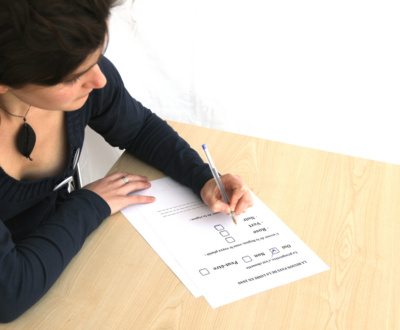Get More Social Media Views in 3 Easy Steps with Time-Targeted Posts
- August 1, 2013
- Blog
One of the consequences of the growth of the connection economy is that attention has become the market’s most scarce resource. Before the internet the challenge was distribution, and companies like record labels and book publishers controlled what received exposure. Almost everything that passed through these gatekeepers received tremendous attention by today’s standards, however the situation is now reversed. Today publishing content is as easy as starting a blog or creating a YouTube channel, and the problem is getting attention for what you create.
This fact is more apparent on social media than almost anywhere else. Facebook and Twitter have hundreds of millions of active users on their platform every day, all publishing their own material for their respective audiences. Amidst this mass of information, it’s no wonder that capturing anyone’s attention for a sustained period of time is difficult.
Fortunately for you, part of the problem could be a simple matter of timing.
If you are posting your updates at the wrong time of day, either when many other users are also posting, so your voice gets drowned out, or when your audience is not actively checking their feeds, you’re not going to see the results you want from your social media efforts.
This post contains a three-step guide to testing which times are best for your business to post to social media. While there have been plenty of reports that give recommendations on the best times of day for companies to publish their content, every brand’s audience is different. There’s no guarantee that what worked for another company will work for your business as well. Plus, if everyone else is following these “best practices,” that means the competition for attention will be strongest at those times. By strategically testing the times you post, you can know for sure the time of day that your audience is most responsive and capitalize on it.
Step 1. Create a Tracking Sheet
In order to measure the effectiveness of your social media posts at each time of day, first you have to set up a way to track your posts. You want to create a matrix that has the times of day you are testing across one axis and the various interactions that you are going to measure, like retweets or comments, across the other axis.
The below example shows how you could measure clicks and retweets across a calendar week at three different times of day. If you’re going to measure clicks though, you need to make sure you only use tweets with links in them for the experiment. Otherwise there won’t be anything to click on and you will have to put a zero in for that tweet, which will throw off your results. Also, if you want to run this test on Facebook, you can measure likes, comments, and/or shares for your content instead of clicks and retweets.
|
Mon |
Tues |
Wed |
Thurs |
Fri |
Sat |
Sun |
||||||||
| RT | CLK | RT | CLK | RT | CLK | RT | CLK | RT | CLK | RT | CLK | RT | CLK | |
| 9AM | ||||||||||||||
| 1PM | ||||||||||||||
| 5PM | ||||||||||||||
Pick three or four different times spaced out throughout the day to start. Later you can hone in more narrowly on the exact best time to post, since by spreading out the times in your first test you will get an idea for the direction in which you should focus your future experiments.
Step 2. Run and Record Your Test
Once you’ve created your tracking sheet, it’s time to run and record your test. In order to make sure that you always post at the exact same time each day for your experiment, the best idea is to schedule your posts in advance. You can do this natively on Facebook, and services like HootSuite will allow you to do it on Twitter.
Also, do your best to eliminate other variables by posting similar content across each time of day. For example, if you post a call to action in a post for people to like it, there’s a good chance it will generate more likes. If you only post this message in the mornings, you may wind up skewing the results in the favor of those posts, so spread them out evenly across each time period to avoid biasing your results as much as possible.
Finally, to the best of your ability, you want to try to give each post the same amount of time before you record its results. If you post at 9AM, 1PM and 5PM, and then record your results at 9AM the next day, the first post has 24 hours to gain exposure while the last post only has 16. This extra eight hours could wind up throwing off your test results if it gets compounded across a full seven-day experiment.
Step 3. Refine and Optimize
When you’ve completed your test, tally up the interactions you received at each time of day to determine the best one or two times for you to post. After that you can experiment again with a narrower range of times around the winners. For example, if you found that 1PM and 5PM are the best times, try testing 12PM, 2:30PM and 6PM and then compare them to the initial test to see if they did any better. This will allow you to zero in on the exact best times for you to post in order to help your social media efforts cut through the clutter and gain the most exposure for your brand.
If you’ve tested the best times for your company to post, let us know when they are in the comments!
This is author biographical info, that can be used to tell more about you, your iterests, background and experience. You can change it on Admin > Users > Your Profile > Biographical Info page."
About us and this blog
We are a digital marketing company with a focus on helping our customers achieve great results across several key areas.
Request a free quote
We offer professional SEO services that help websites increase their organic search score drastically in order to compete for the highest rankings even when it comes to highly competitive keywords.
Subscribe to our newsletter!
More from our blog
See all postsRecent Posts
- 4 Reasons You Should Be A/B Testing Your Email Marketing Campaigns May 15, 2018
- The Secret Strategy for Using Surveys to Boost Conversions (It’s Not What You Think) February 2, 2017
- Advanced Brand Positioning Strategies December 31, 2016




